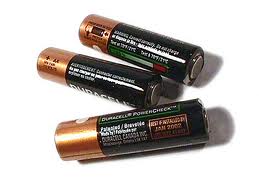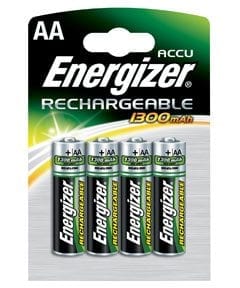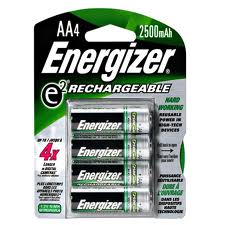Affiliate Disclosure: We earn a commission if you purchase through one of our links at no additional cost to you.
The nice thing about running a blog on photography is that you can get an idea for your next post every day. Today’s idea came about an unusual route, though. I’m feeling run down and lacking energy. Somehow my mind decided to twist that into an opportunity to write about batteries. It beats mowing the lawn.
High Drain Tools
Cameras and related equipment, like your flash, are high drain devices. Unlike a radio, they don’t use a steady stream of energy over a period of time. Instead, they draw up energy waiting for a release and then let it go in a burst. Your ability to release that next burst of energy depends upon how quickly your batteries can recycle it.
Where to Begin

If you’re like most people, you grab a set of standard, alkaline batteries when you start. Many new photographers haven’t really developed a need for rechargeable batteries and it’s convenient to just grab a pack at the grocery or hardware store. Sometimes you can grab a big pack of them, so you have plenty on hand when you burn through the first set.
People tend to think of batteries in volts, particularly if you remember transistor radios that ran on 9-volt batteries. AA batteries are typically produced with 1.5 volt ratings for standard alkaline, but slightly lower 1.2 volts for rechargeable batteries. That may lead you to believe that standard batteries will perform better, but that’s not true. There are other factors at work.
Voltage is a measurement comprised of Current multiplied by Resistance. If a AA battery has 1.5 volts, where does it get the current? Amps provide the current, and it’s measured in batteries as milliampere-hour (mAh), or 1/1,000th of an ampere-hour. If you look at batteries when shopping, you may notice that they vary in capacity from 850 mAh up to 2900 mAh. In other words, not all AA batteries are made the same.
Standard vs. Rechargeable Differences
One of the differences between standard alkaline batteries vs. NiMH (Nickel-Metal Hydride) is how they discharge. Left unused, standard alkaline batteries will lose very little of their energy. Comparatively, NiMH batteries may lose 2-3% of their charge per day. However, NiMH batteries will server 3-4 four times longer than standard alkaline batteries in high drain devices. That’s because alkaline batteries were designed to provide their capacity slowly. They have a steady rate of decline of power over their lifetime in devices that draw power slowly. Unfortunately, high drain devices tax that power beyond their design capacity and cause them to die rather quickly.
That 1.5 volt rating of alkaline batteries is only true when they’re fully charged. As their capacity gets used, the calculation to determine the available volts yields a different result. Over its life, a standard alkaline battery cannot consistently deliver 1.5 volts. NiMH batteries have a different design and yields more consistent capacity over its charge, but then falls off very quickly. The result is a longer, consistent useful life in a high drain device, and faster recycling time than an alkaline battery can provide. NiMH batteries typically deliver 1.2 volt consistency through most of its charge, rather than a constantly decaying voltage of a standard alkaline AA battery. When you finally get a message from your electronic device that your NiMH batteries are running low, you’re out of useful time and need to replace them, rather than trying to squeak by with just a bit more power. Trust me, it’s done.
mAh
The mAh rating of a battery is a guide to it’s energy storage capacity. The higher the number, the more energy the battery can store. That translates to faster recycling time in a flash, for example, if you choose a battery with a higher mAh rating. It also takes a bit longer to recharge a battery with a higher mAh rating. Don’t expect that the same brand of battery will have the same rating, though.
As you can see above, each package of Energizer AA batteries has a different mAh rating (1300 & 2500). They also come in ratings of 2000, 2200, 2450, and perhaps others that I haven’t seen. The price difference is insignificant, but the capacity difference is nearly double. Pay attention to that rating to get the capacity you need.
Other Factors
Energizer is a brand you can easily find in the supermarket, but is it the best? The answer may depend upon your needs. For the longest life, you can find better options. Sanyo Eneloops are low-self-discharge (LSD) rechargeable NiMH batteries. They typically come at 2000 mAh, which is a bit lower than some of the Energizers. However, they can still retain 70-85% of their charge after one year of storage at 68F. The Energizers will be dead by that time, but they have another feature some photographers find more important – a 15 minute battery charger. You may spend an hour recharging other brands of batteries. Unless you have multiple chargers and electrical outlets, that equates to a lot of time waiting on batteries to charge and swap out. You’ll have to decide for yourself which matters more for your needs.
Best Practices
No matter which rechargeable batteries you buy, there are a few things you can do to help them perform at their best level.
- Use batteries with like mAh rating. Don’t mix 1300 mAh batteries in the same device as your 2000 mAh batteries.
- Keep sets together for use and recharging. If you have four batteries in your flash, keep them marked to recycle for charging and usage together. That consistency will help extend their life.
- Don’t overcharge. Get a smart charger with a microprocessor that determines the battery’s charge and then shuts off. Otherwise, overcharging will damage your batteries.
- Freeze them. While alkaline batteries don’t need cold temperatures to retain their charge, NiMH batteries can benefit from the cold and maintain a 90% charge for a few months of storage. Be sure to protect them with freezer bags.
There are other types of batteries on the market. Some specially designed alkaline batteries work well in high drain devices, but you still end up tossing them out and buying replacements. If you’re shooting regularly with a battery grip or flash, then NiMH are much more cost effective in the long run.









Nice article. 2500 mAh Eneloops were recently announced.
Thanks, John. As I’m sure you know, I’m here to help.
Great post, William!
The Voltage = Current multiplied by Resistance info took me back to when I was studying for my ham radio exams several years ago.
As you said, we each have to find out what works best for us. I used to use energizer and maha rechargeables for my cameras and flash. I now use sanyo eneloops because they can retain their charge long enough for impromptu photo ops (especially with my 6 year old) and not worry about charging them the day before. I still carry alkalines in my bag for emergencies, though.
Thanks for the post!
Tommy
Thanks, Tommy. You never know when that basic engineering stuff will come in handy.